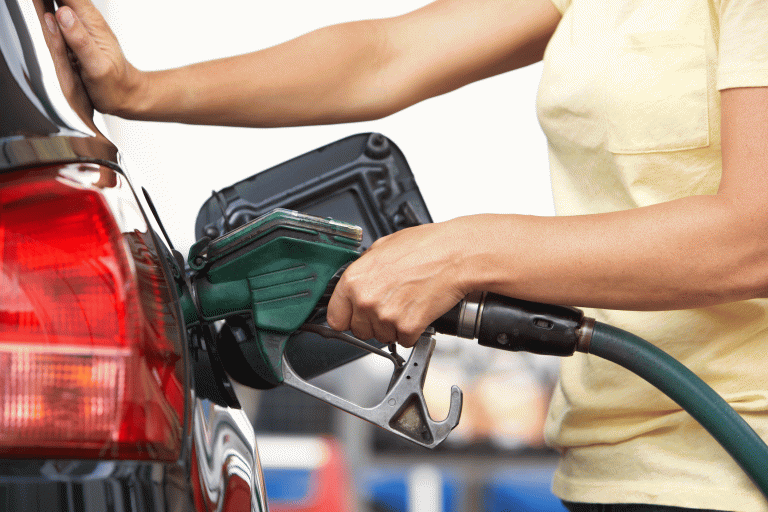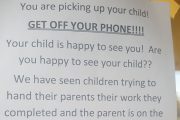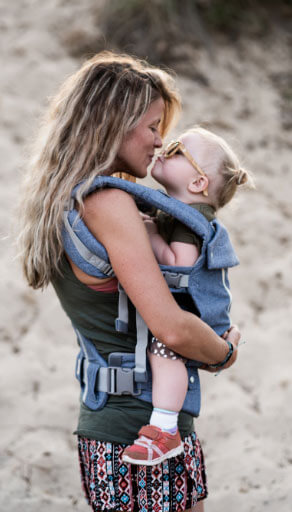Why I Leave My Kids in the Car at the Petrol Station

Why I Leave My Kids in the Car at the Petrol Station
{opinion}
We are told not to leave children (and dogs) in the car, ever. Cars heat up extremely fast, and as hot as it can be outside, the temperature inside the car is always much greater. As parents (and responsible dog owners) we know this.
Kids and dogs can die in hot cars. Don’t leave them in the car. Got it.
But what about when you are paying for petrol?
The car is parked in the shade under a huge service station awning at the bowser, and it only takes a couple of minutes to pay for your fuel. Surely that’s okay?
Well, apparently not. We are meant to unbuckle our children, get them out and take them all into the petrol station with us when we pay for fuel. Then walk them all back out to the car and buckle them all back in again.
Dr Claire Wilkin, medical adviser for paediatric first aid training facility Kidzaid Australia, firmly declares that that is exactly what we should be doing – we should never leave our children in the car at all, ever.
“No exceptions. No excuses. Just don’t do it — it isn’t worth the risk,” she said. “There is NO SAFE WAY of leaving children in a car while paying for petrol.”
Worth the risk of what? A little discomfort that the air con and the Wiggles CD weren’t on for a few minutes? They’ll live.
Keeping the children in their carseats is better than having children bowled over by an old granny as she tries to maneuver her Cortina around the pumps. And better than having a child jumping in oil and fuel contaminated puddles while their mother is getting a sleeping baby into and out of the car.
All things carefully considered, my children are better off staying in the car.
I always turn up the air conditioning as high as it will go for five minutes or so before stopping the car under the shelter at the servo. Taking the keys with me and ensuring all the children are still buckled in, I quickly fill up while pulling funny faces at them through the windows. Then my children watch me walk over to the kiosk to pay for my fuel, perfectly safe in the locked car for the two or three minutes it takes to complete the transaction. Then I hop back in, keep the air con cranking and drive away.
Surely this is the one grey area that is acceptable?
Let’s be clear — I would never, ever leave my children in the car under any other circumstances. Like every other responsible human being, I am always shocked and appalled to hear the news stories of children left in cars on hot days. That a parent can be gone from their car for long enough for a crowd to gather and police to be called is astounding, and downright child abuse. It should not happen, full stop.
This isn’t the 1970’s when it was commonplace for the wife and children to sit in the car outside the pub waiting for the man to drink drive them all home without seatbelts. When you know better, you do better.
But really? Leaving the children safely buckled in their carseats while you run in and pay for fuel isn’t okay?
I disagree with that wholeheartedly. We’re aren’t writing cheques anymore, a quick tap and it’s done. And I can see them through the window the entire time.
They are already sitting in the car while I pump the fuel, what’s another two minutes going to do? And what if their other parent is sitting in the car waiting as well? The car is still going to heat up just as much.
There are obviously ways to avoid this entire scenario, and I do make an effort to get fuel while the children are not in the car, but it’s not always possible. I can also fill up at service stations that allow for credit card payments at the bowser, but they are few and far between. If every servo had Paywave at the pump, we wouldn’t have an issue.
Petrol stations are dangerous places. I believe it is far safer to leave them buckled in their seat belts in the car than lead them across the lanes where other drivers are trying to get to a pump, inhaling fuel and exhaust fumes along the way.













